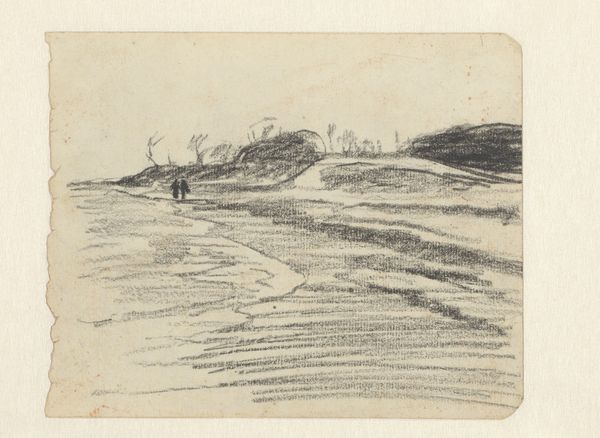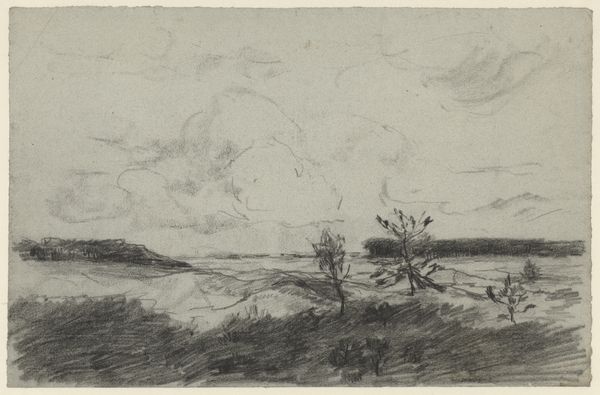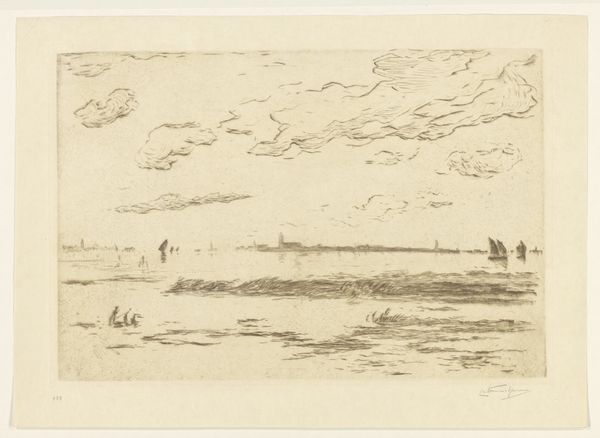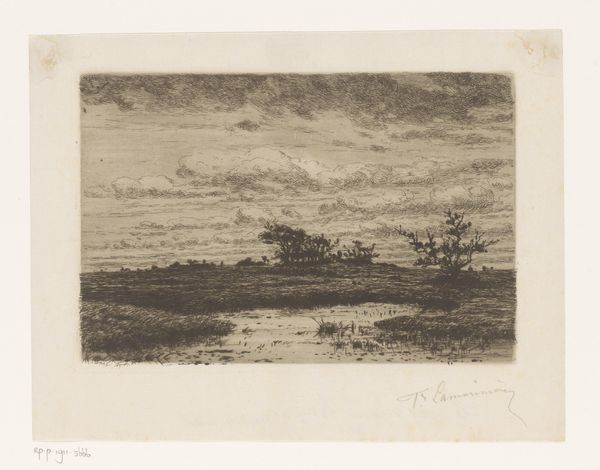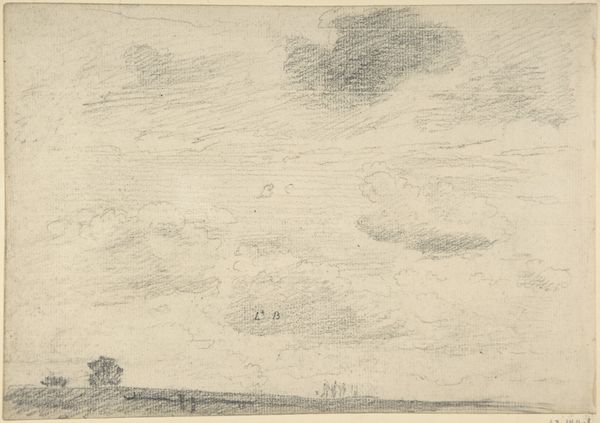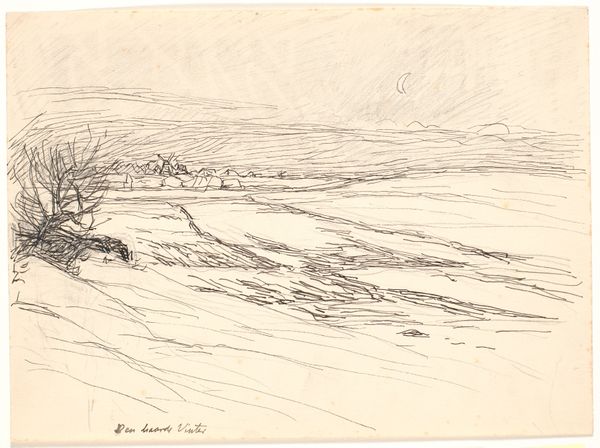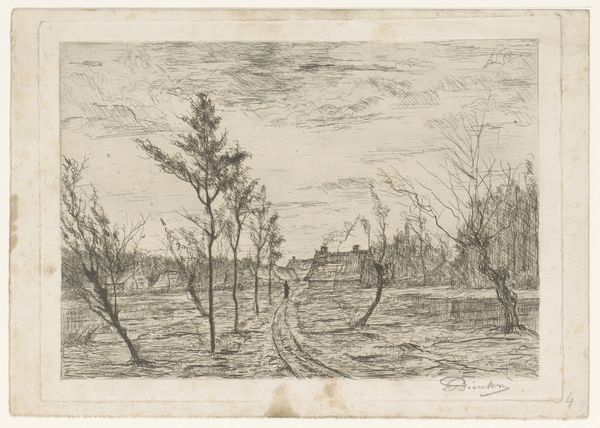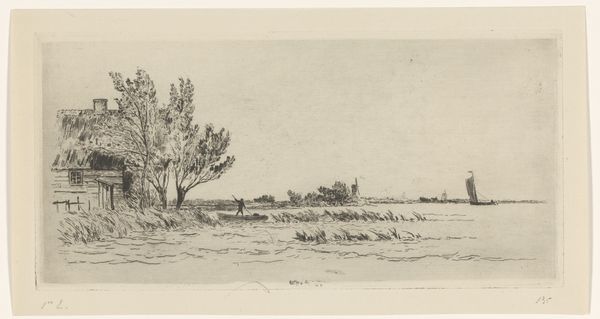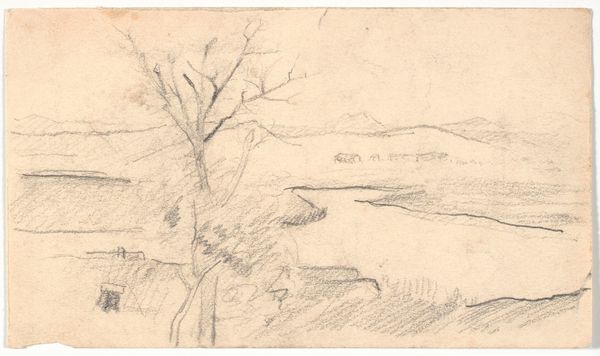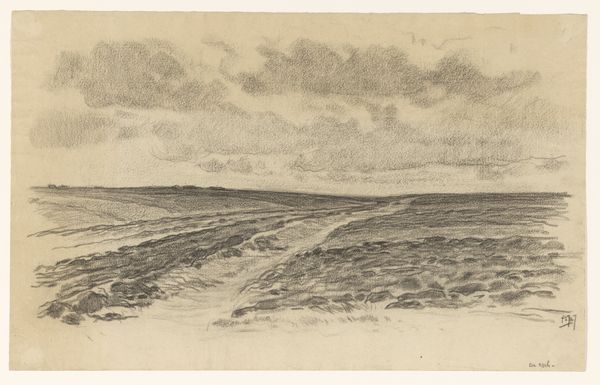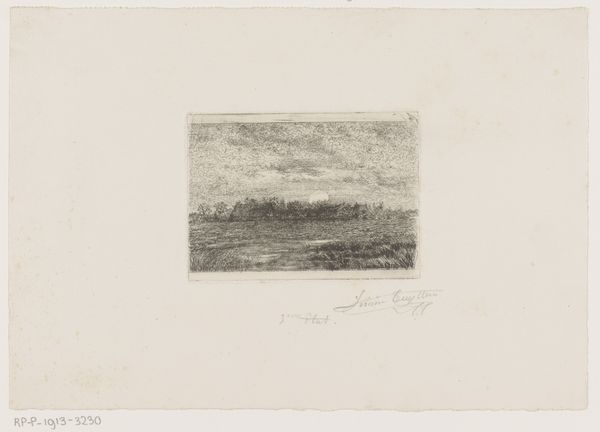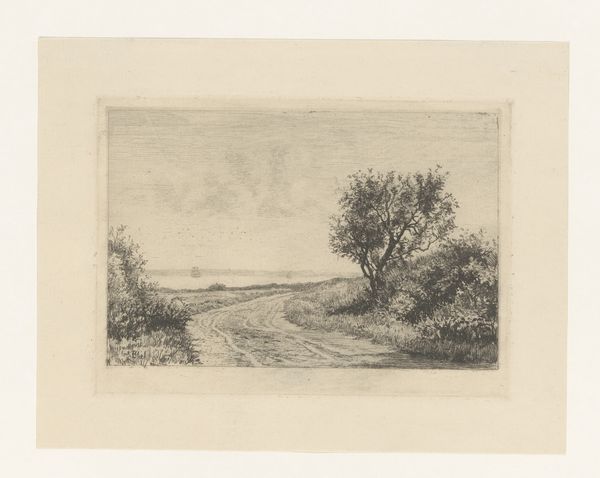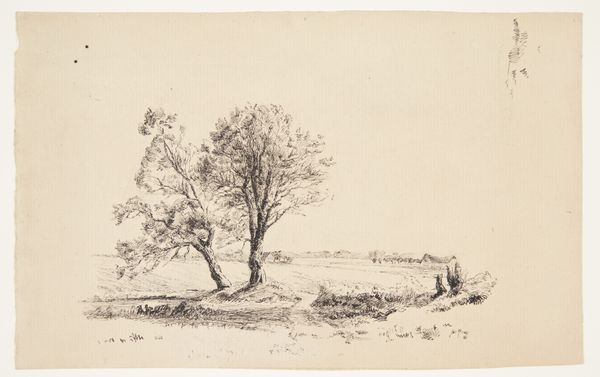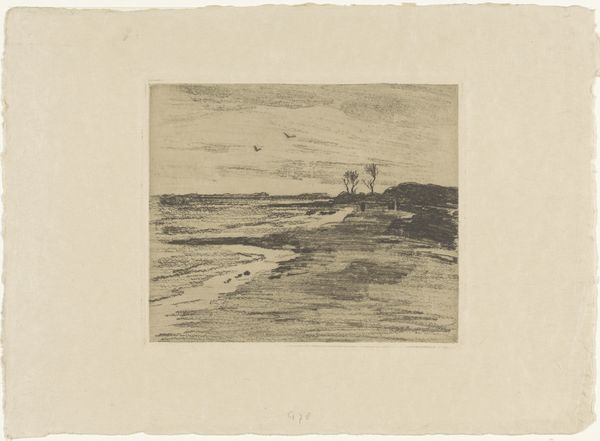
Dimensions: height 137 mm, width 160 mm
Copyright: Rijks Museum: Open Domain
Curator: Before us we have Willem Witsen’s “Open Landschap,” created sometime between 1870 and 1923. It's a pencil drawing currently housed at the Rijksmuseum. Editor: It’s…bleak. Strikingly so. The horizon line is severe, dividing the composition almost in half, weighed down by this oppressive sky. And those two bare trees… they seem almost mournful. Curator: Witsen, associated with the Dutch Impressionist movement, often depicted landscapes infused with a particular mood. The pencil medium lends itself to a raw, immediate expression. Think about how landscape, throughout art history, frequently symbolizes the inner emotional state of the artist or even the broader cultural consciousness. Editor: Exactly. The landscape as a mirror to society. And looking at this one, especially given the period it was made, it evokes the rapid social and political upheavals occurring in Europe at the time. This isn’t a romantic pastoral scene. It’s a landscape wrestling with change, perhaps reflecting the anxieties around industrialization and its encroachment upon nature. Even the strokes of the pencil seem agitated, like scratch marks. Curator: Yes, it's true; even without the artist clearly indicating if it is farmland, barren wasteland, or anything in between, that ambiguity feels central to its power. The symbolism of the open landscape – and those lonely figures clustered on the horizon line, huddled together, seeking the sparse shelter from the stand of bare trees– as a threshold, speaks volumes. It calls upon images and stories of our own history. Editor: And the lack of detail forces us to confront the harshness of the scene. This isn’t about pretty aesthetics; it’s a raw, unflinching look. The almost aggressive scratching and smudging, especially in the sky, seem to create an atmosphere of unease. I'm interested in those shadowy, undefined shapes dotting the ground; are these figures in conversation with nature or despoiling it? Curator: That absence of sentimentality really does create a powerful and unnerving impression. Witsen invites us to bring our own historical memories and anxieties to this open land. Editor: Absolutely. This image lingers; the landscape refuses to simply sit passively before our gaze, forcing us to interrogate the world, the scene, and our place in it.
Comments
No comments
Be the first to comment and join the conversation on the ultimate creative platform.
